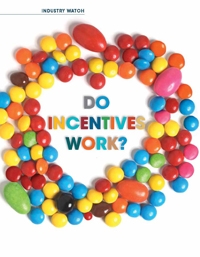
Much has been said both for and against using incentives to drive business results—be it revenue and profit, or market share.
Despite this, there is surprisingly little research, particularly in Asia, to guide practitioners on how different pay models affect decisions that lead to better company performance. CEOs, Remuneration Committees (RemCos), HR executives and executive compensation consultants have been searching for the ‘Holy Grail’ of pay-for-performance for a long time.
Besides the traditional pay-for-performance model, there are three other pay-for-performance alternatives: Tournament, Membership, and Bonding models.
Are there differences in how these models affect performance? Which pay-for-performance model provides the greatest incentive to improve business results? Are there differences in performance if the incentives provided are team-based or individual-based, or if they are offered in combination? And which approach—team, individual or a combination—provides the greatest incentive to improve performance?
There are four different perspectives when addressing pay-for-performance in organizations:
- RemCos worry about governance and link to overall company results.
- CEOs are more concerned about fairness and recognition.
- HR heads look mostly into market competitiveness and retention.
- Executive pay consultants are concerned with design features and buy-in.
Executive compensation consultants are often tasked by RemCos of corporate boards to advise on developing an approach to pay their company executives to achieve better business performance.
For RemCos, pay should not vary so much from year to year. To the CEOs, the view is starkly different. From the perspective of executive pay advisors, it is unclear if incentive pay plans work as intended.
Long-term versus short-term incentives
Asian companies constantly debate about the role that LTIs should play in the overall employee pay mix, alongside base salary and annual bonuses.
This debate is spurred by the various viewpoints from the different stakeholders involved. For instance, boards have an interest in maximizing return on pay and minimizing risk to their investment.
Often, management observes that share price movement (the main component behind total shareholder return) is not always linked to the performance of the company, as industry and market factors play a role as well.
Individual versus team incentives
Companies also often struggle to find a balance between individual incentives and team incentives as a motivator of performance. Here, again, there is a divergence of viewpoints. Whereas for the CEO it is straightforward, as the company’s performance is also his or her personal performance, as soon as you go down one level, distinctions start to emerge between an individual’s performance and the overall team performance.
However, standard practice differs from this notion: At the executive level there are often no team incentives except for when the overall annual bonus pool is based on company results for short-term incentives, and increases in share price are considered an all-of-company result, for long-term incentives.
Both of these approaches have detractors as well that hold the view that there is “no real way to differentiate performance” and thus maintain that team results should be balanced with individual performance. The corollary to this line of reasoning is that balance is important as, in their view, having only individual incentives could mean too much ‘kill all’ behavior, and too many team incentives may foster freeloaders.
For RemCos, the view is that only the company’s performance counts and the entire senior management is there to ensure overall results are achieved. For individual executives, the view is often that if they have performed their duties and achieved their individual results, this should be rewarded regardless of the company’s outcomes.
HR and compensation professionals wrestle with this problem constantly, as executives with great performance but low overall pay are at risk of leaving the company and joining its competitors.
Boards, and, more recently, regulators, worry about the effects of different long-term vehicles as drivers of performance. In the minds of many, linking pay to performance has led management teams to seek strategies involving high risks and high potential returns that have, at times, resulted in very negative effects.
Finally, HR heads all over the world search for the compensation plan that will allow their companies to find a pay-for-performance model that leads to higher attraction, retention, and motivation of executives, and to hopefully achieve better business results. In an ideal set of circumstances, HR would like to come up with pay programmes that meet the objectives of the shareholders and executives.
However, quite often, HR is under pressure to find and keep executives, and not so much for delivering performance, which is deemed to be the responsibility of the executives and the CEO.
Thus, HR executives have an inherent bias to side with arguments for ‘market data-based’ compensation to discharge their attract-retain-motivate duties. They argue that there is competition for talent, and firms need to pay to attract and retain the talent they seek.
Need for a research-based approach
The discrepancies in positions and approaches to the near-dogma of pay-for-performance are troubling. There is a definite need in Asia to apply scientific rigor to the question of how best to design executive pay programmes to determine if they work at all, and which approach leads to better results. In short, there is a need to move from ‘market-based’ to ‘research-based’ advice.
Academic literature has an abundance of evidence on pay-for-performance. However, the evidence is inconclusive on two counts: The first is the debate on whether money is an extrinsic motivator at all, or if individuals are intrinsically motivated. The second unresolved element in literature is the impact that different payment mechanisms have on performance if any.
Finally, while there is a general consistency in the literature regarding team incentives working to drive performance, there are very few data points comparing individual incentives to team incentives as drivers of performance.
Our study
The results of our study revealed that differences in pay conditions do not significantly impact performance. Equally, no single approach (e.g., different long-term incentive vehicles, varying pay mixes, any of the three alternative pay-for-performance approaches, one of the team incentive designs) has a significant performance advantage either. However, we do find that, jointly, the team approaches we designed do significantly outperform all the individual approaches.
An analysis of the patterns of responses showed that nearly half of all participants stopped seeking more profitable alternatives when they were ahead in the game. Perhaps more importantly, a higher percentage of participants changed their strategy or ‘took a risk’ when behind.
Further analysis of the data reveals that, for all individual conditions, the level of profit at which individuals risk when behind or stop when ahead is equivalent. These results suggest that the perceived risk is not inherent in any of the pay conditions. The implication of this result is that being risk-prone or risk-averse can be construed to be circumstantial rather than strictly a personality trait.
Applying the research to address pay-for-performance
The current approaches to executive incentive plan design have left stakeholders on all sides concerned, confused and, at times, disillusioned with the results. On the one hand, practitioners worry that incentives may lead executives to be highly motivated but still reach poor outcomes. On the other hand, the perception is that results are not appropriately linked to the payout.
Our study provides empirically derived data on the effectiveness of often-used pay schemes, as a means of achieving higher company performance. Another implication of our study is that an executive incentive plan design should focus on team incentives, as this approach is clearly superior to incentivize the achievement of business outcomes. The results also suggest that team incentive plans should be based on shared goals for maximum impact on business performance.
Our study also indicated that LTI plan designs could have a slight edge over other models, due to their higher ROI. Yet, perhaps LTI plans can be best used in a team context, or for executive retention purposes. A final implication of the study is that no amount of tweaking on any of the other elements of pay plan design seems to have any impact on performance. Thus, practitioners can focus on the elements of design mentioned above and worry less about the rest.
Our findings are of use to RemCos, executive pay consultants, CEOs, and HR professionals, in designing incentive programmes. These executives, among others, are seeing the benefits of a premeditated approach to addressing pay-for-performance. It starts with recognizing the limitations of the current pay plan design and then developing a pragmatic pay programme that includes market data, governance requirements, and pay package competitiveness.
Finally, these incentive plans will need to be tweaked to achieve a blend of results—from better performance to higher retention and adequate pay governance.
The Rewards (Compensation & Benefits) module at SMU Academy
It may take some time for HR professionals to find a definitive solution to the issue of offering incentives as a means of driving performance. SMU Academy’s Rewards (Compensation & Benefits) module offers a closer look at rewards frameworks and programmes in light of the practical considerations to be made in real-world settings.
As one of the components of the Academy’s HR Graduate Certification, the module equips HR professionals and business executives with a thorough grounding in Rewards concepts and principles. These include an understanding of how Rewards can be integrated with other HR solutions and an appreciation of key success factors.
Get a full course description and registration details for the Rewards module, here.
Originally published by the SMU Centre for Management Practice, 11 Dec 2018 by Dr. Fermin Diez
